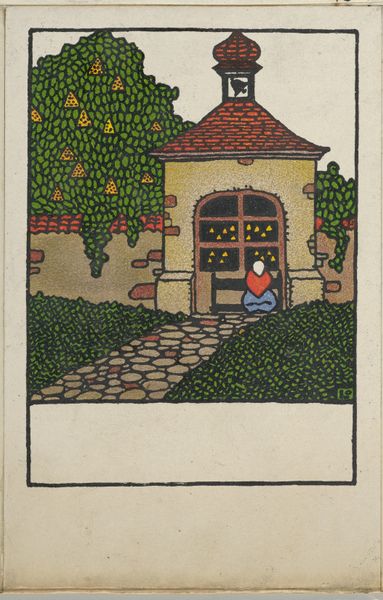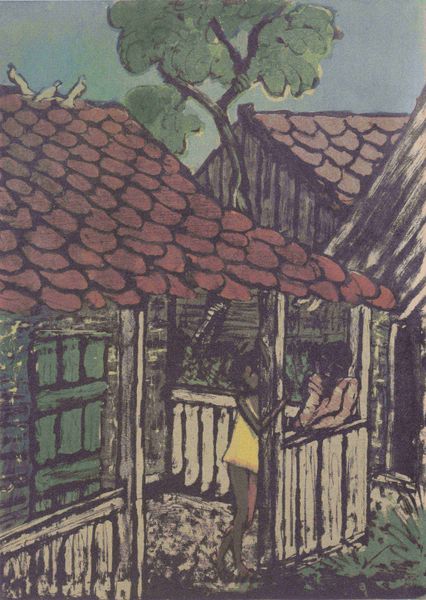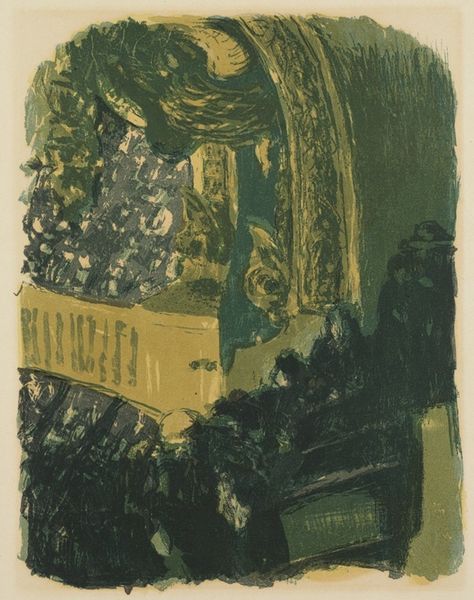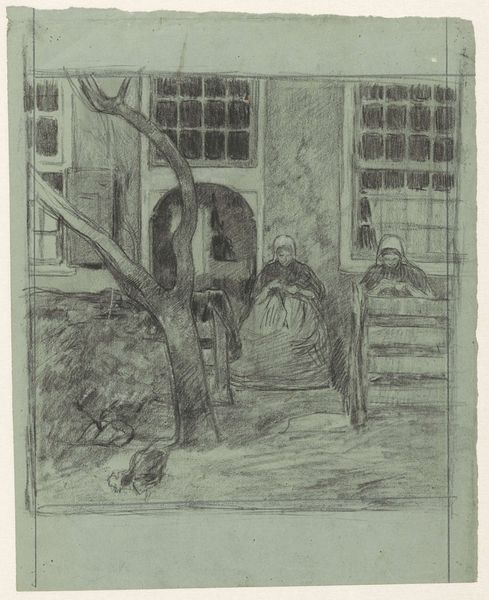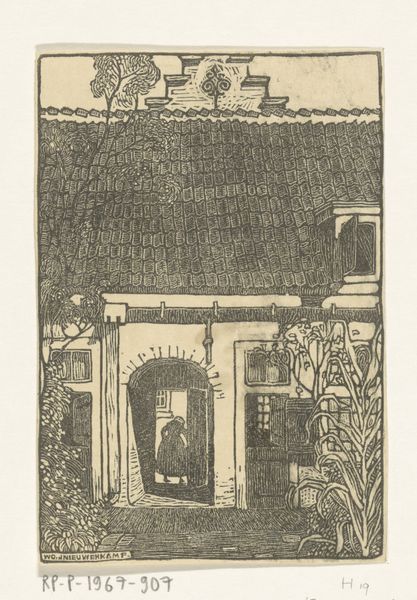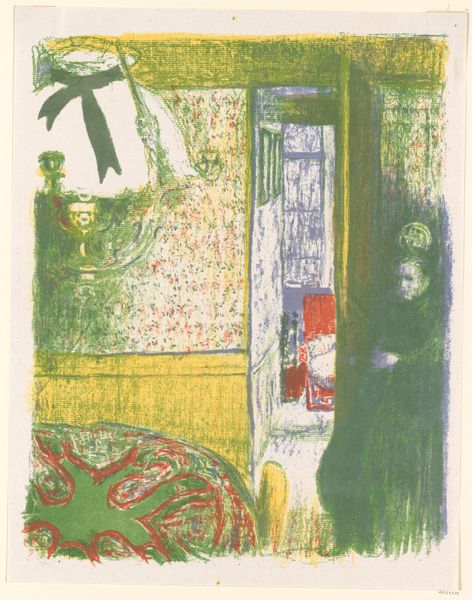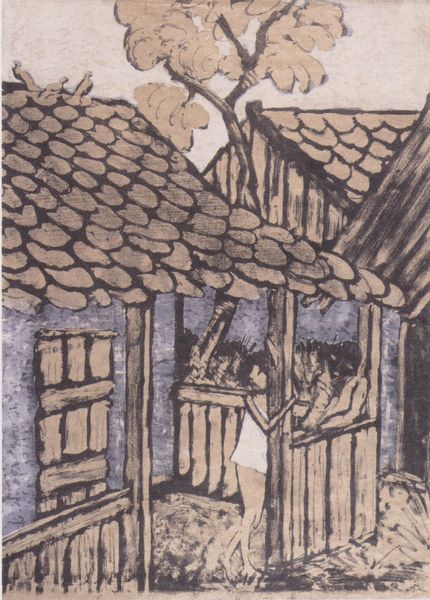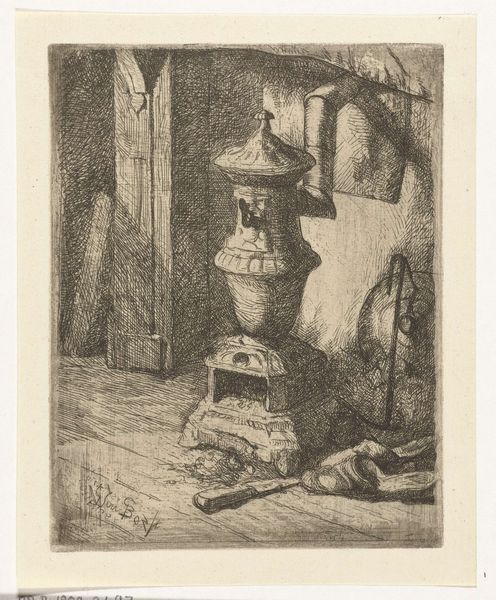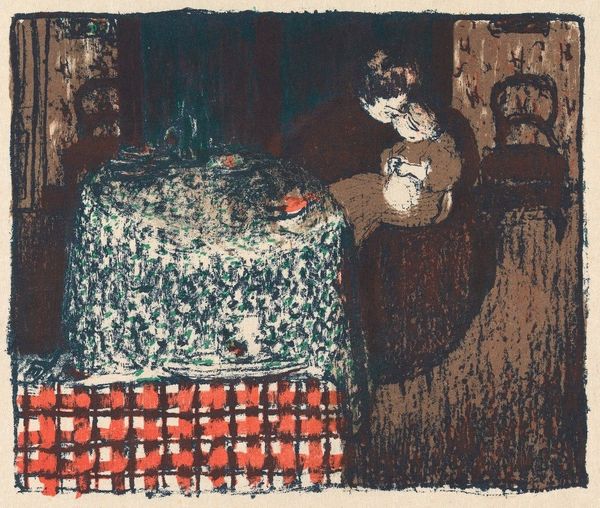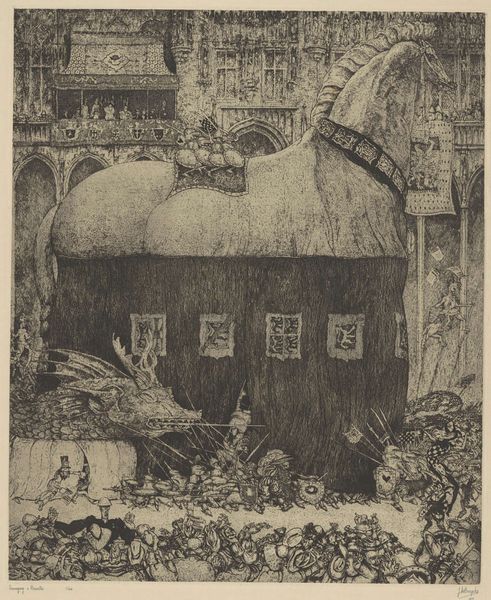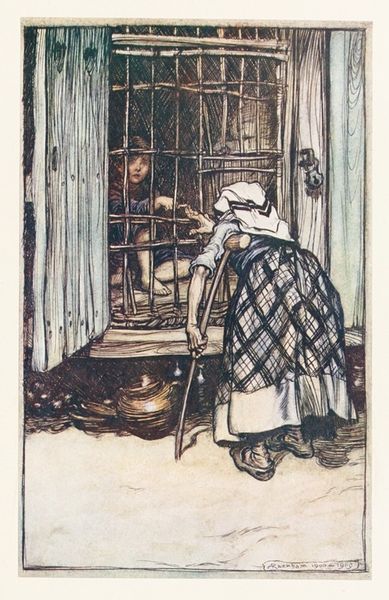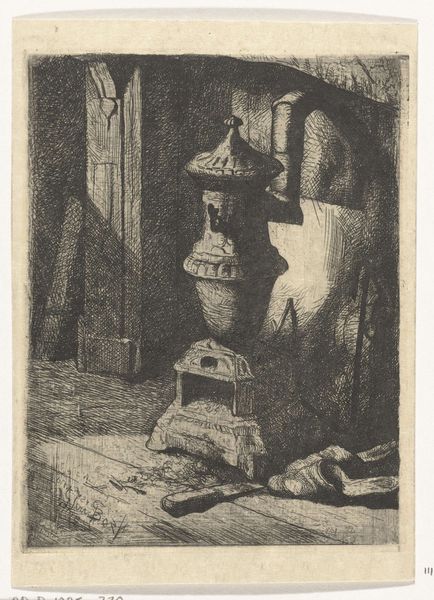
Dimensions: sheet: 21.59 × 16.51 cm (8 1/2 × 6 1/2 in.) mount: 32.07 × 27.31 cm (12 5/8 × 10 3/4 in.)
Copyright: National Gallery of Art: CC0 1.0
Curator: What strikes me first about Anthony Velonis's "El" Station, Interior from 1939, done in coloured pencil and print, is the unexpected warmth. There's a coziness in what should be a cold, industrial space. Editor: I see what you mean. The limited color palette and rough textures give it a folk-art feel, almost naive. It pulls you in. But it also depicts an important public service. In the late 30s urban transportation networks played a crucial role in how communities connected and evolved. Curator: Absolutely. That hulking stove-like form definitely dominates the foreground and makes it feel sort of homely. Maybe that's intentional— to suggest even in these transient spaces, a sense of waiting and refuge? Editor: That form looms, doesn't it? It gives this sense of pre-war, maybe pre-air conditioning America... when public spaces had to offer that basic amenity of heating or cooling. The details like the decorative window frame give the space its personality beyond pure function. Curator: Yes! And that glimpse outside, through the structure's frame toward a building with what looks like a steeple, suggests life continuing beyond this single space. But there's also a definite focus inward toward community and civic connection. Editor: It's such a beautiful study in contrasts: the hard lines of the industrial structure meeting the softened edges of what seems like hand coloring. Even that "Exit" sign contrasts against that lovely design on the window and the cathedral in the background. It encapsulates the constant negotiations between moving onwards and the rootedness of life. Curator: It makes me wonder if Velonis was interested in the everyday beauty found within a system generally perceived as a means to an end. Sort of elevates the mundane, doesn't it? Editor: It certainly does. It suggests even the most utilitarian locations, if we only look, contain their own stories, and become part of our shared social history. Curator: Well, it gives me a new perspective to the commute! Editor: Me too, thank you!
Comments
No comments
Be the first to comment and join the conversation on the ultimate creative platform.
